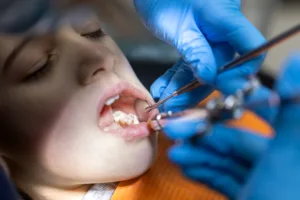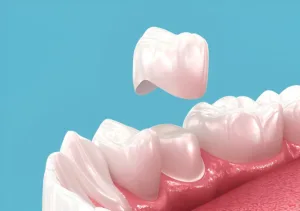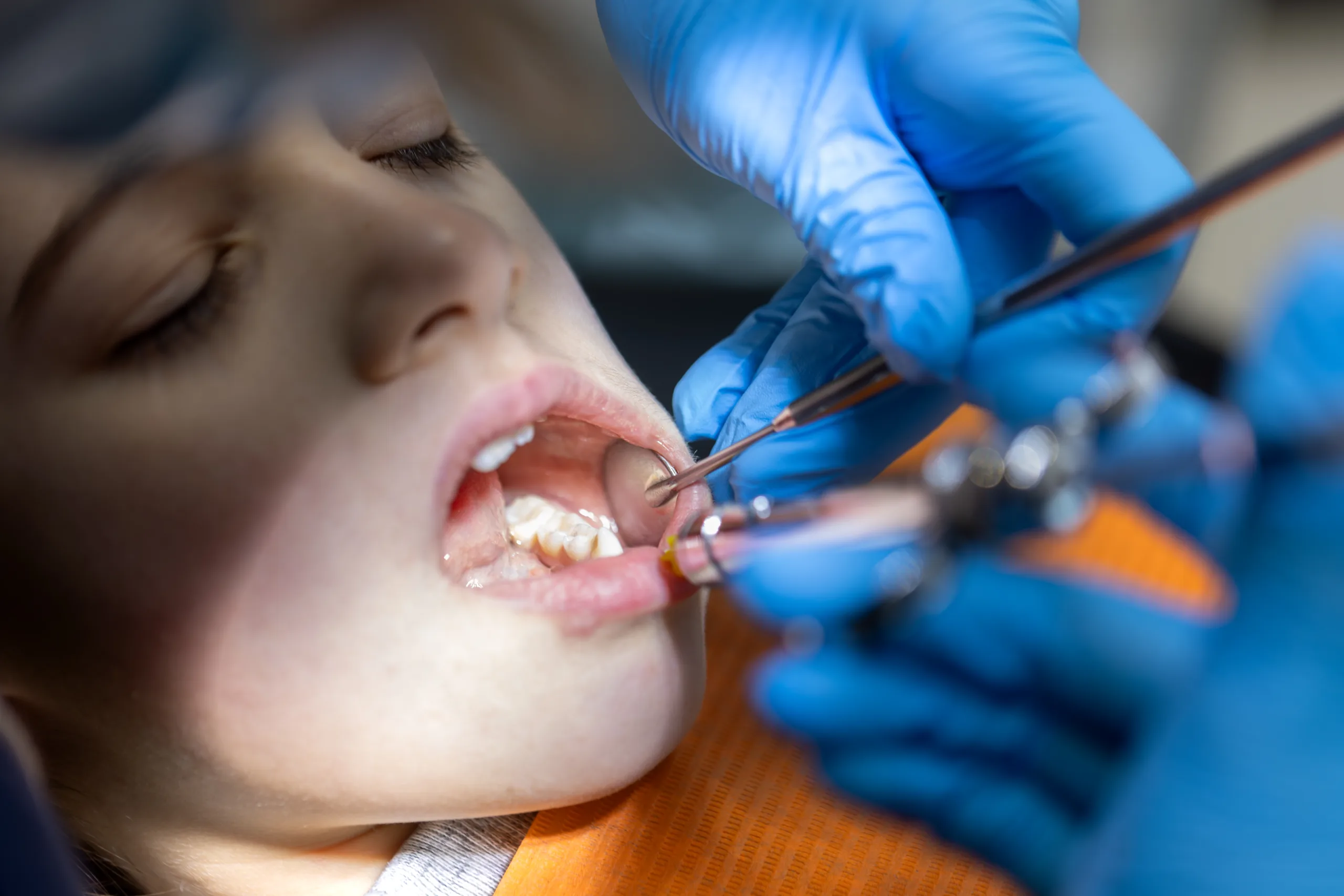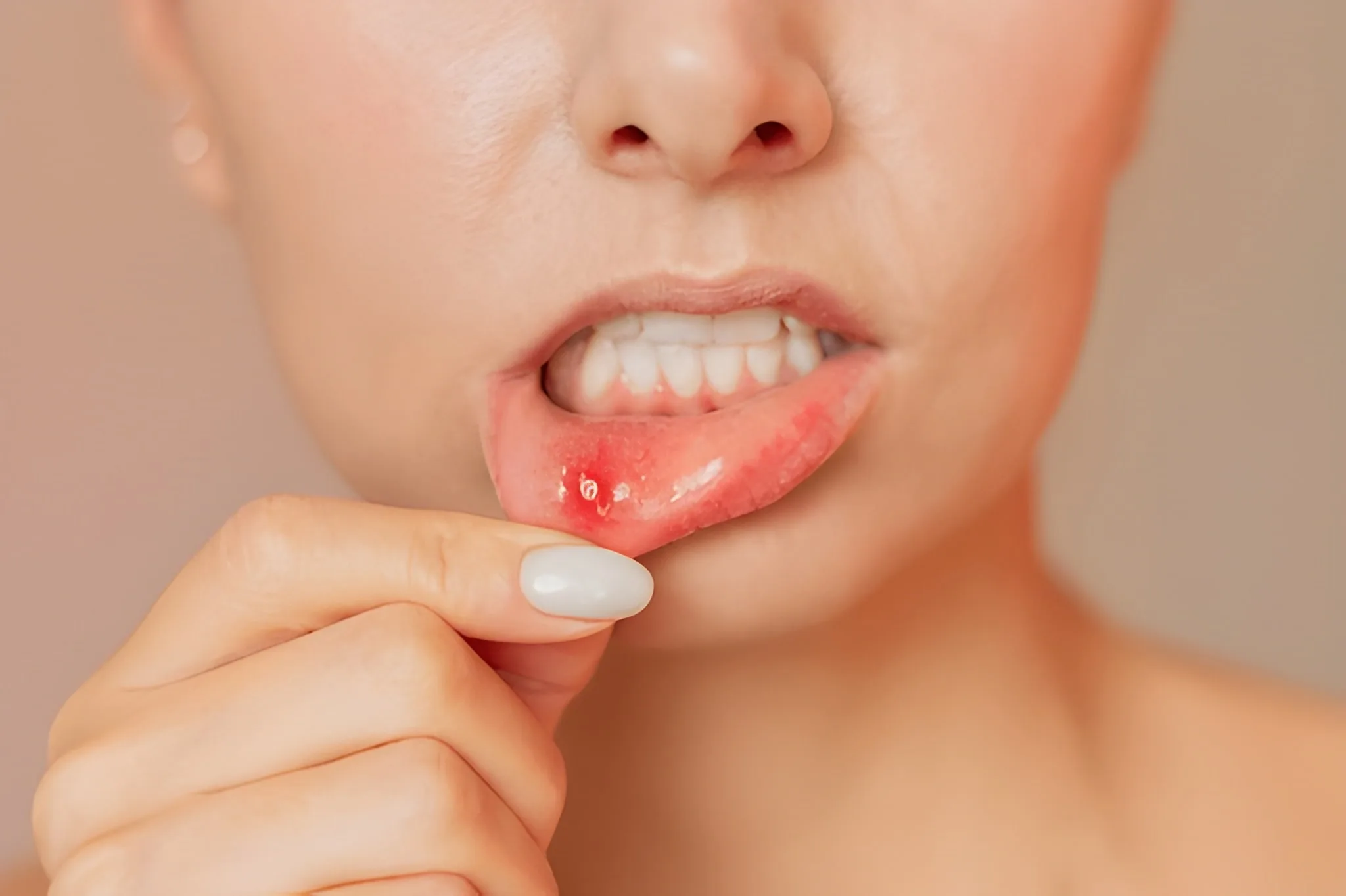A healthy, lasting smile starts with knowledge. While many people view a cavity as a sudden, isolated event, tooth decay is actually a progressive process that unfolds in distinct phases. This common condition, known medically as dental caries, is the result of a battle between the bacteria in your mouth and the protective surface of your teeth.
When bacteria consume sugars from your diet, they produce acids that gradually dissolve the tooth structure. Recognising the stages of tooth decay is the most powerful tool you have, as intervention at the earliest stages can completely reverse the damage, saving you pain, time, and expense.
Table of Contents
Here is a detailed breakdown of the five distinct stages of tooth decay, along with the general treatment and prevention strategies associated with each level.
Stage 1: Initial Demineralisation (The Reversible Phase)
This initial stage is a warning sign that the tooth is under attack.
- What happens: The outer layer of the tooth, the enamel, begins to lose essential minerals (calcium and phosphate) due to acid exposure. This process is called demineralisation. Enamel is the hardest substance in the human body; however, prolonged acid exposure compromises its strength.
- Signs: This stage is usually symptom-free, meaning no pain is felt. The only visible indicator is a small, chalky white spot on the tooth surface where the enamel has become porous due to mineral loss.
- Treatment & Prevention: This is the only stage of tooth decay that can be naturally reversed. Treatment focuses on remineralisation. Using fluoride toothpaste, drinking fluoridated water, and receiving professional fluoride varnish treatments can help rebuild and strengthen the enamel, effectively halting and reversing the decay before a physical cavity forms.
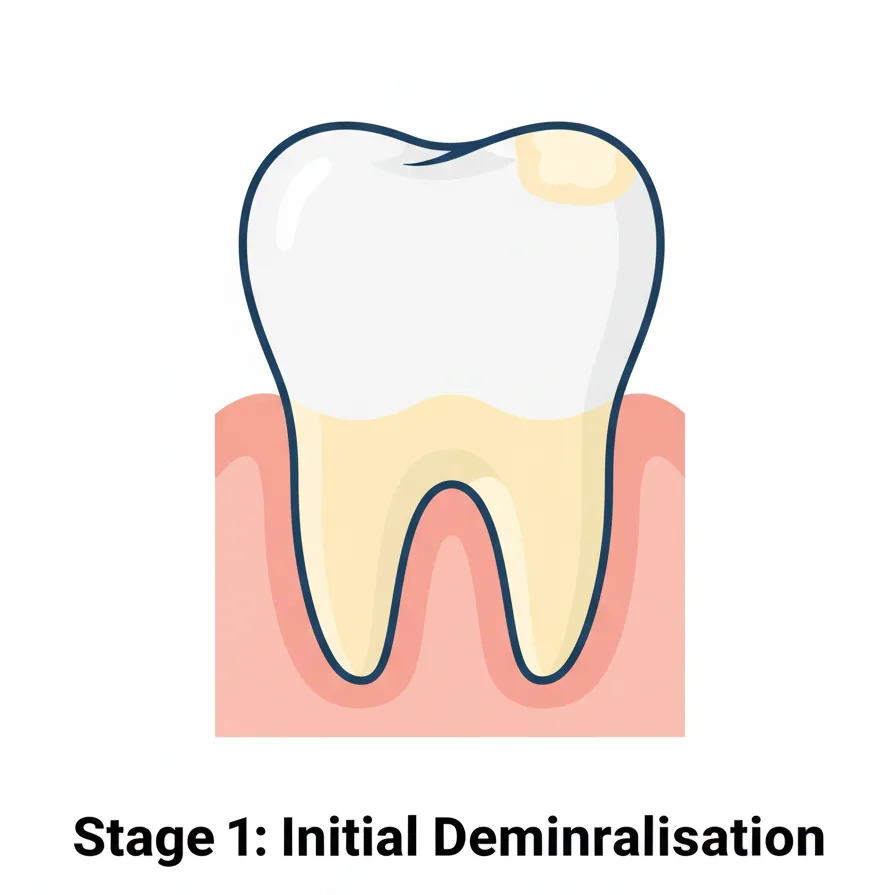
Stage 2: Enamel Decay (Cavity Formation)
If demineralisation is not addressed, the first physical damage to the tooth occurs.
- What Happens: As mineral loss continues, the structural integrity of the enamel breaks down entirely, forming a distinct hole or lesion. This physical breakdown is what is commonly referred to as a cavity or dental caries. The white spot often darkens to a brown or black colour as the surface collapses.
- Signs: The hole may be small and still cause no pain. However, some people might start to feel slight sensitivity when brushing or eating.
- Treatment: Once the enamel surface is breached, the tooth cannot heal itself. The standard treatment for this stage of tooth decay is a dental filling. A dental professional will remove the decayed material and fill the cavity with a restorative material, such as composite resin or amalgam, to restore the tooth’s shape and prevent bacteria from entering deeper.
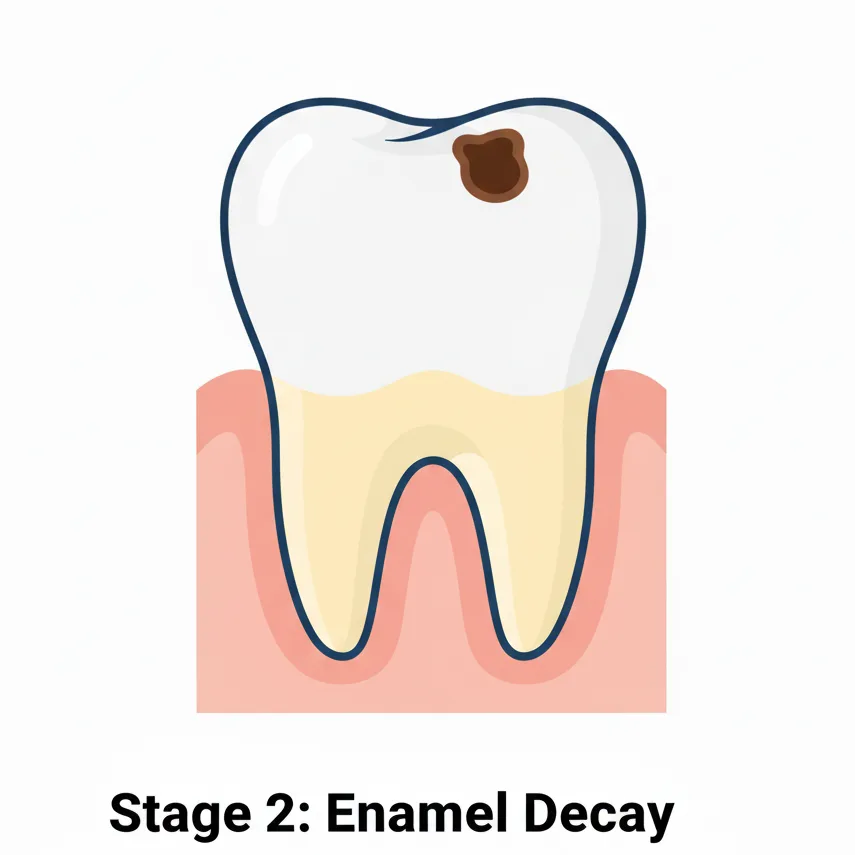
Stage 3: Dentin Decay (Increased Sensitivity)
The decay accelerates significantly once it passes the enamel barrier.
- What happens: Beneath the enamel lies the dentin, a softer, more sensitive layer containing thousands of tiny tubules that lead directly to the tooth’s central nerve. Because dentin is softer, decay progresses much faster when it reaches this layer.
- Signs: The most common symptom at this stage is tooth sensitivity, especially when eating or drinking hot, cold, or sugary items. The rapid decay is now threatening the living core of the tooth.
- Treatment: If the decay is caught early in the dentin, a large filling might still be enough. However, in more advanced cases, the tooth may require more extensive coverage, such as an inlay, onlay, or a full dental crown to reinforce the structure after the decay is cleared.
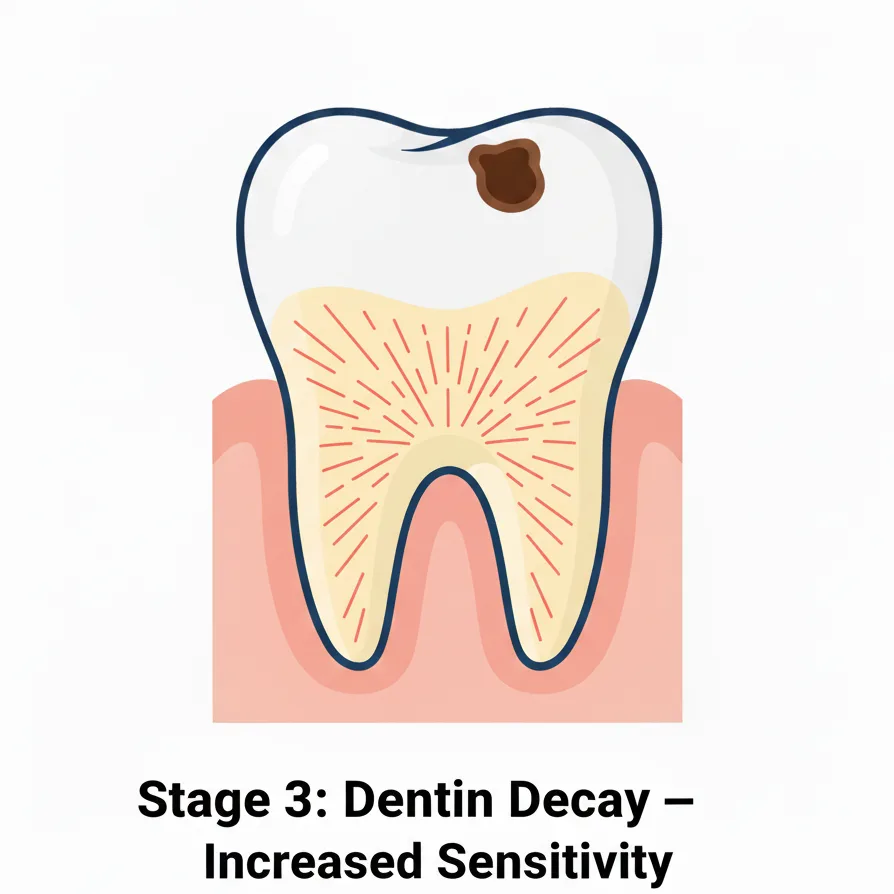
Stage 4: Pulp Damage (Severe Pain)
When the infection reaches the innermost layer, a serious infection takes hold.
- What happens: The pulp is the innermost part of the tooth, containing nerves, blood vessels, and connective tissue. When bacteria invade the pulp, the tissue becomes irritated and swells (pulpitis). Since the tooth’s hard walls cannot expand, this swelling places intense pressure on the nerve endings.
- Signs: Severe, constant, and throbbing tooth pain is the hallmark of this stage. The pain is often spontaneous, lingering long after a stimulus (such as cold water) is removed, and can be disruptive to sleep.
- Treatment: This level of damage almost always requires a root canal treatment. This procedure involves removing the damaged or infected pulp, thoroughly cleaning and disinfecting the inner cavity, and then sealing the root canals. The tooth is typically topped with a crown to protect the weakened structure from fracture.
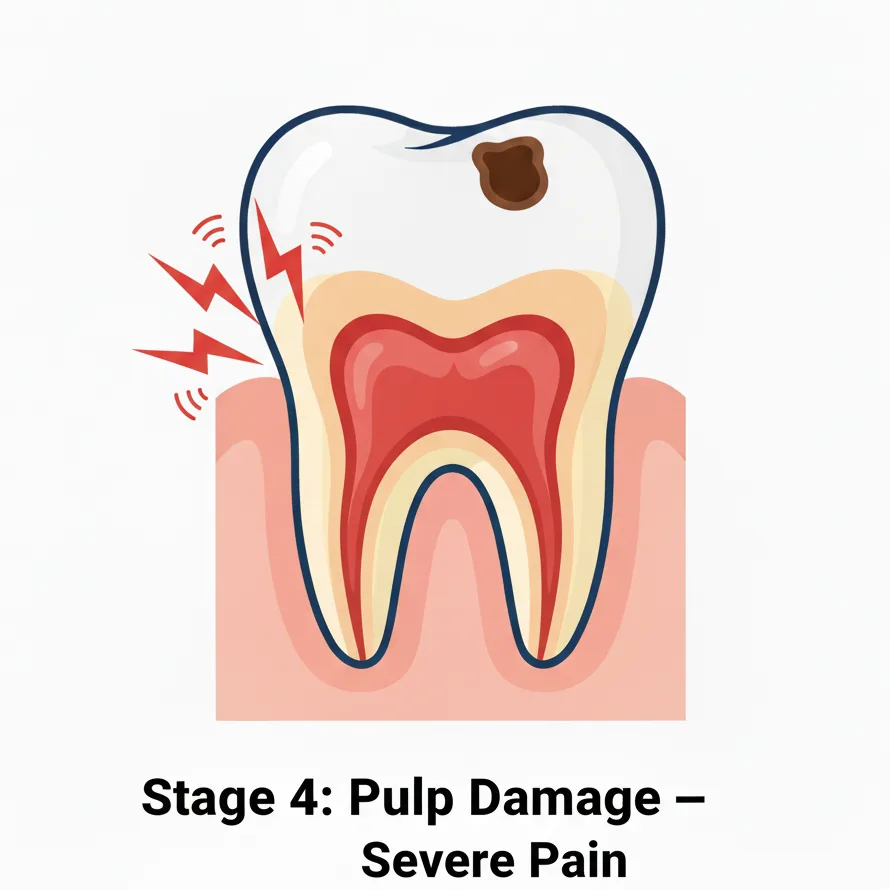
Stage 5: Abscess Formation (Critical Infection)
The final and most serious of the stages of tooth decay, indicating a widespread infection.
- What happens: If the pulp infection is left untreated, it spreads down to the tip of the tooth root, forming a pocket of pus called a dental abscess. This is a critical infection that can erode the jawbone and potentially spread to other areas of the head and neck.
- Signs: Excruciating pain, swelling in the face, jaw, or neck, fever, persistent bad breath or taste, and swollen lymph nodes under the jaw.
- Treatment: An abscess requires immediate attention. Treatment involves a root canal procedure to clear the infection and drain the pus, often combined with a course of antibiotics. In situations where the tooth is too destroyed to save, the only safe option may be a tooth extraction to prevent the infection from spreading throughout the body.
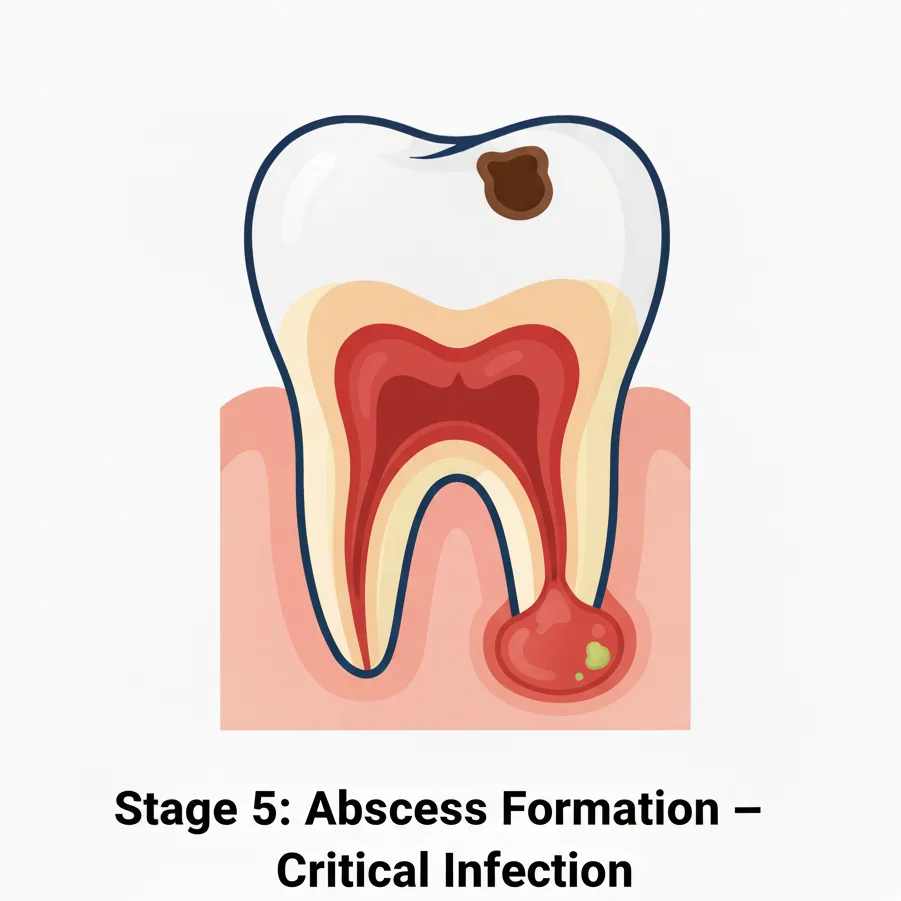
Your Best Defence Against Advanced Decay
The key to avoiding the painful late stages of tooth decay is simple: regular, proactive dental care. You can significantly reduce your risk by:
- Brushing and Flossing: Use a fluoride toothpaste twice daily and floss once daily to remove the sticky plaque film before it can produce enamel-damaging acids.
- Dietary Choices: Limit your intake of highly processed sugars and acidic beverages, which fuel the bacteria responsible for decay.
- Preventative Check-ups: Visiting a dental professional regularly allows for the detection and reversal of Stage 1 decay before it ever turns into a painful cavity.
Don’t wait for a toothache to start your dental journey. If you suspect you are experiencing any of the stages of tooth decay, or if it’s time for your routine check-up, book your same-day appointment at Richmond & Springvale Dental Group immediately.
With convenient locations in Abbotsford and Springvale, we are committed to providing expert treatment and preventative care to help you maintain a healthy, pain-free smile.


